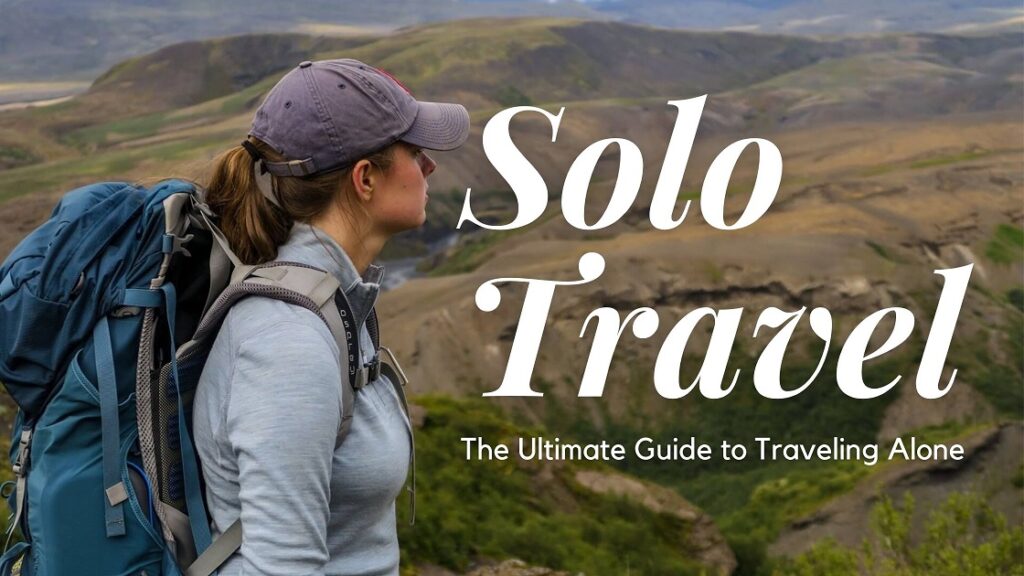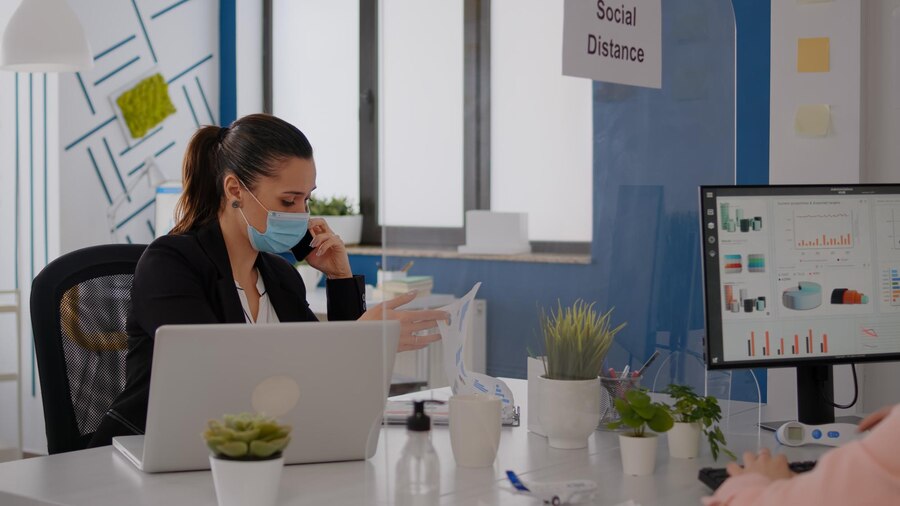Traveling solo is an enriching and rewarding experience, but it also comes with unique challenges. For many adventurers, the idea of exploring a new destination on their own is empowering. The freedom to set your own schedule, make spontaneous decisions, and immerse yourself in the local culture without any distractions is part of what makes solo travel so appealing. However, it’s important to acknowledge that traveling alone requires additional safety precautions to ensure that your adventure is enjoyable and, more importantly, safe.
In this comprehensive guide, we’ll share expert tips and advice on how to travel solo safely, whether you’re heading to a bustling city or a remote destination. From planning and preparation to staying vigilant during your travels, we’ll walk you through the key steps to ensure your journey is memorable for all the right reasons.
1. Planning Ahead: Preparation is Key
The foundation of a safe solo travel experience begins with thorough planning. The more you prepare ahead of time, the more equipped you’ll be to handle any surprises along the way.
Research Your Destination
Start by researching your destination in depth. Look into the local customs, cultural norms, and general safety guidelines for tourists. Some cities may have specific areas to avoid or certain cultural practices to be mindful of. Websites, travel forums, and guidebooks are great sources of information.
Make sure to learn about transportation options, local emergency numbers, and nearby hospitals. Being aware of any potential natural disasters or political unrest is also critical for planning.
Create a Detailed Itinerary
A clear itinerary helps you stay organized and ensures that you’re on track throughout your trip. Share your itinerary with close friends or family members. Include flight details, accommodation addresses, and any significant activities you plan to do. Also, let them know how often you plan to check in with them. This is a simple way to ensure someone always knows where you are.
Having a flexible plan is important too. While solo travel gives you the freedom to go with the flow, knowing your options for lodging, transportation, and activities will reduce the chances of facing unpleasant surprises.
Purchase Travel Insurance
Travel insurance is one of the most essential purchases you can make before traveling solo. It can cover unexpected situations such as flight cancellations, medical emergencies, and even theft. Insurance is your safety net, offering you peace of mind during your travels.
2. Packing Light and Smart
One of the most crucial aspects of solo travel is the art of packing. Traveling light makes navigating airports, train stations, and unfamiliar streets easier and less stressful.
Pack Only the Essentials
You don’t need to pack your entire wardrobe. Stick to essentials that can be mixed and matched. Avoid overpacking, as heavy luggage can attract unwanted attention and make you an easy target for pickpockets.
Invest in a good quality, comfortable backpack or suitcase with secure zippers. This makes it easier to carry your belongings and also provides an extra layer of security.
Carry a Safety Kit
Make sure to pack a small safety kit that includes the following items:
- A first-aid kit (band-aids, painkillers, antiseptic wipes)
- A power bank for your phone
- A flashlight (especially for evening travel)
- A lock for your luggage
- Extra copies of important documents (passport, ID, credit cards)
If you’re heading to a destination where you might need specific items like insect repellent, a travel pillow, or sunblock, be sure to pack accordingly.
Keep Important Documents Secure
It’s critical to keep your passport, IDs, and travel documents secure. Consider investing in a neck pouch or money belt that keeps these items hidden from view. Don’t store all your important documents in one place; for example, keep one set in your daypack and another set in your main luggage.
3. Accommodation: Choosing Wisely
Your choice of accommodation can significantly impact your safety during solo travel. Whether you’re staying in a hostel, hotel, or guesthouse, take the time to research and select a place that prioritizes security.
Read Reviews and Check Ratings
Before booking a place to stay, check reviews from other solo travelers. Websites like TripAdvisor, Hostelworld, and Booking.com allow you to see real reviews about the safety and comfort of each accommodation. Look for feedback about the location, accessibility, and overall security of the property.
Stay in Central Locations
While staying in a remote area may sound appealing, it’s always safer to choose accommodation in central or well-populated locations. Being close to transportation hubs like train stations, bus terminals, or airports makes it easier for you to navigate the city.
Security Features Matter
Check if the accommodation offers secure locks on doors, safes in rooms, and 24-hour reception. These safety measures are essential, especially if you’ll be arriving late at night or early in the morning.
4. Transportation: Staying Safe on the Move
Getting around is one of the most important aspects of solo travel, and it’s essential to be cautious when choosing transportation options.
Use Reputable Transportation Services
In many countries, taxis or ride-sharing services like Uber are safer options than public transport or hailing random cabs on the street. Always opt for official, reputable services to minimize the risk of scams or unsafe situations.
Stay Aware in Crowded Areas
Public transportation can be chaotic, especially during peak hours. Be cautious of pickpockets in crowded spaces like bus stations, metro lines, or tourist spots. Keep your valuables secured and be mindful of your surroundings.
Consider Walking or Cycling
When exploring a new city, walking or cycling can be the best way to get around. Not only does this allow you to experience the area more intimately, but it also ensures you’re in control of your movements. Stick to well-lit, populated streets and avoid wandering into unfamiliar or shady areas.
5. Personal Safety Tips: Trust Your Instincts
When traveling solo, your personal safety should always come first. While it’s important to stay alert, it’s equally important to trust your instincts and be aware of any discomforting situations.
Stay Aware of Your Surroundings
Whether you’re walking down the street, sitting in a café, or waiting for transportation, always be aware of your surroundings. Avoid looking at your phone constantly, and keep your belongings close to you at all times. Keep a mental note of exits, nearby landmarks, and people around you.
Limit Nighttime Wandering
While it’s tempting to explore a city after dark, it’s always safer to stay in well-lit, populated areas. Avoid walking alone late at night, especially in unfamiliar neighborhoods. If you must, consider taking a trusted taxi or ride-sharing service.
Trust Your Instincts
If something feels off, trust your gut. Don’t hesitate to leave a situation that feels uncomfortable, and always choose your safety over politeness. It’s okay to turn down offers of help or change your plans if something doesn’t feel right.
6. Staying Connected: Keep in Touch with Loved Ones
Even though solo travel is about independence, it’s essential to maintain communication with someone back home.
Set Regular Check-ins
Establish a routine for checking in with friends or family members, whether it’s via text, email, or video calls. This gives them peace of mind knowing that you’re safe. Set a time to communicate, even if it’s brief.
Use Technology to Stay Safe
Smartphone apps can help you stay safe while traveling. Some apps allow you to share your location with loved ones, while others track your itinerary. Consider using apps like Find My Friends, Life360, or even Google Maps to help someone track your whereabouts in case of an emergency.
7. Health and Hygiene: Staying Safe and Well
Health should always be a priority when traveling, especially when you’re on your own. Solo travel can sometimes disrupt your regular routines, but taking care of your health will keep you feeling your best.
Carry a Medical Kit
Always have a basic medical kit with you, including prescription medications and any over-the-counter remedies you may need. Familiarize yourself with local pharmacies or hospitals in the area in case you need medical attention.
Stay Hydrated and Eat Well
Make sure to drink plenty of water and eat balanced meals. Traveling solo can sometimes lead to unhealthy habits, like skipping meals or eating on the go. Try to maintain a balanced diet to keep your energy up.
Practice Good Hygiene
Especially in areas where water and sanitation may be an issue, always wash your hands or use hand sanitizer. Keep any necessary hygiene products handy, such as tissues, wet wipes, and a refillable water bottle.
Conclusion: Embrace the Adventure
Solo travel is a unique and transformative experience that offers personal growth, cultural immersion, and a deeper connection to the world around you. By following these safety tips, you’ll minimize potential risks and maximize your enjoyment during your journey. With a combination of careful planning, common sense, and a healthy dose of caution, your solo adventure will be a safe and unforgettable experience.
Remember, traveling solo is not about avoiding risks altogether—it’s about being smart and prepared to handle any challenges that may come your way. Embrace the freedom, trust yourself, and most importantly, enjoy the incredible adventure that solo travel brings.







